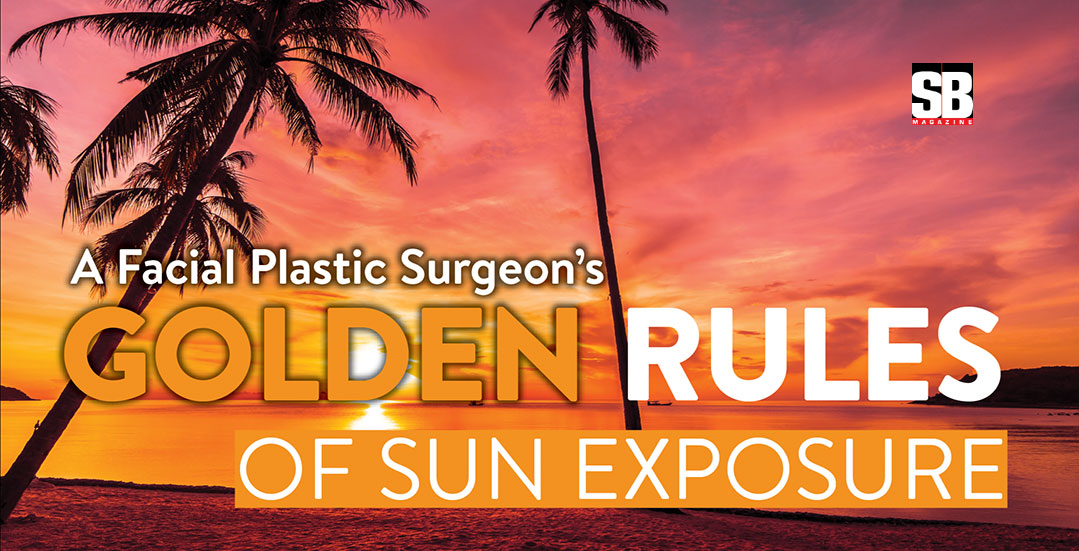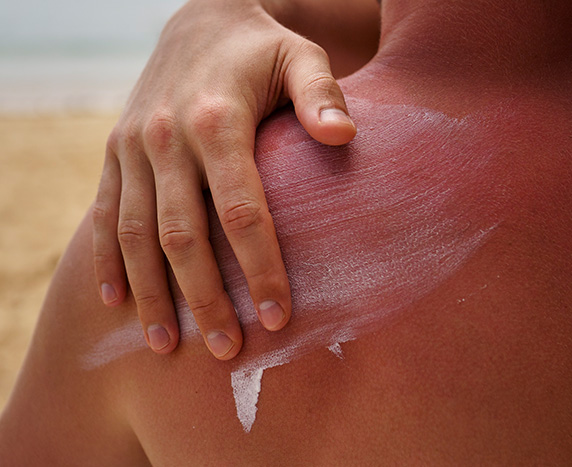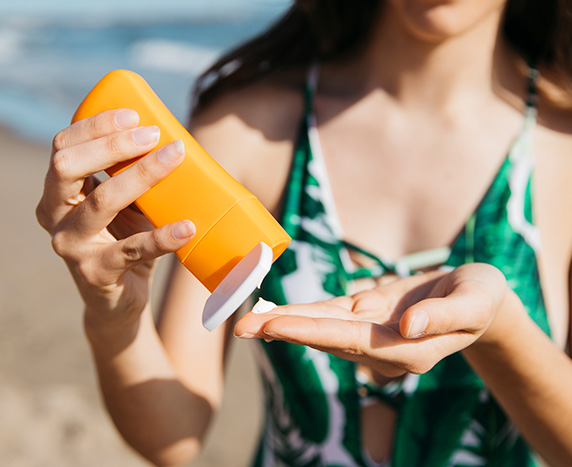No one can deny the deep connection we have with the sun. That feeling of warmth on our cheeks in early spring, or the “hot stone massage” beach sand does to our feet on a sunny day. We need the sun. Everyone has heard about the importance of the sun in our natural production of Vitamin D. We also know of the relationship with daylight and our circadian rhythm. But, our skin takes a beating from the ultra-violet (UV) and infra-red (IR) damage that occurs with prolonged exposure to sunlight. Let’s take a look at what a Facial Plastic Surgeon has to say on the issue of safely enjoying the sun. I have been in practice over 20 years and I treat patients with sun-damaged skin every day. I’ve developed several basic rules to help protect our skin from premature aging related to sun damage.
Rule 1—Avoid sun exposure when possible.
This could mean physically shading yourself with umbrellas, hats, UV blocking clothing, and sunscreens. Combine two or more of these methods to increase protection. Sanders stresses that UV/IR effects are cumulative over our lifetimes. Think about a cup such that once it is full, it will run over. This is how sun damage works and why we see the effects of early damage later in life. Those sunburns you had as a child are still with you, that damage is under the surface even today.
Rule 2—Know your sunscreen.
Not all sunscreens are created equal. There are two broad categories: chemical barriers and physical barriers. This is the single most important thing to know about your sunscreen. Chemical barrier sunscreens react with UV light and get “used up” in the process. The greasy or sticky feel may still be on the skin but it is not effectively blocking UV after about 90 minutes, so it must be reapplied to be effective. Reapply chemical barrier sunscreens every 60-90 minutes for the best protection while in the sun. Physical barrier sunscreens are different in that they do not react with UV but reflect it like a micro-mirror so that it never gets to the skin. Physical barriers do not have to be reapplied unless they come off with sweating or swimming for an extended period of time. The latest improvement in sunscreens is the ability to block infrared light as well. IR is the part of sunlight that gives it heat, but these rays can be aging as well.
Rule 3—Use the highest SPF available.
While it may be true that the benefit of any SPF over 50 is minimal, why not take advantage of this minimal help? There are sunscreens with SPF of even 100 now and there are no downsides to using a higher SPF except that these high SPF sunscreens are almost always chemical barriers so the re-application rule applies.
Rule 4—Post treat sun exposed skin.
It is important to wash off any sunscreen residues that remain and then treat whatever amount of damage you have acquired. I recommend using multi-blend antioxidants (AO) and human derived growth factors (GF) on a daily basis but especially after significant sun exposure. Think of your skin as really thirsty after a day in the sun and give it a big glass of rejuvenating AO and GF..
We all need the sun and with some good planning and diligence towards the steps listed above the aging and damaging effects of sun exposure can be minimized.












